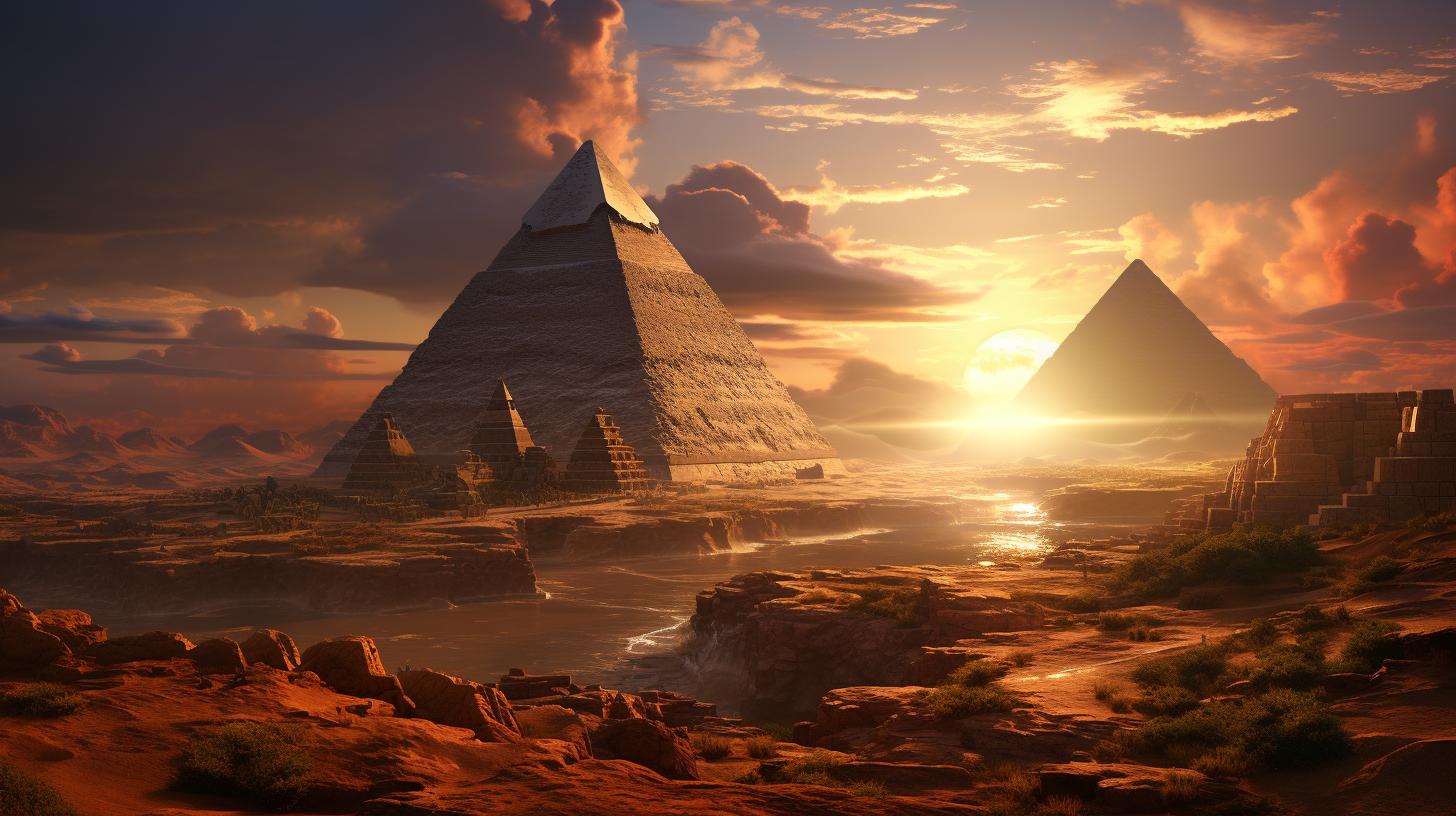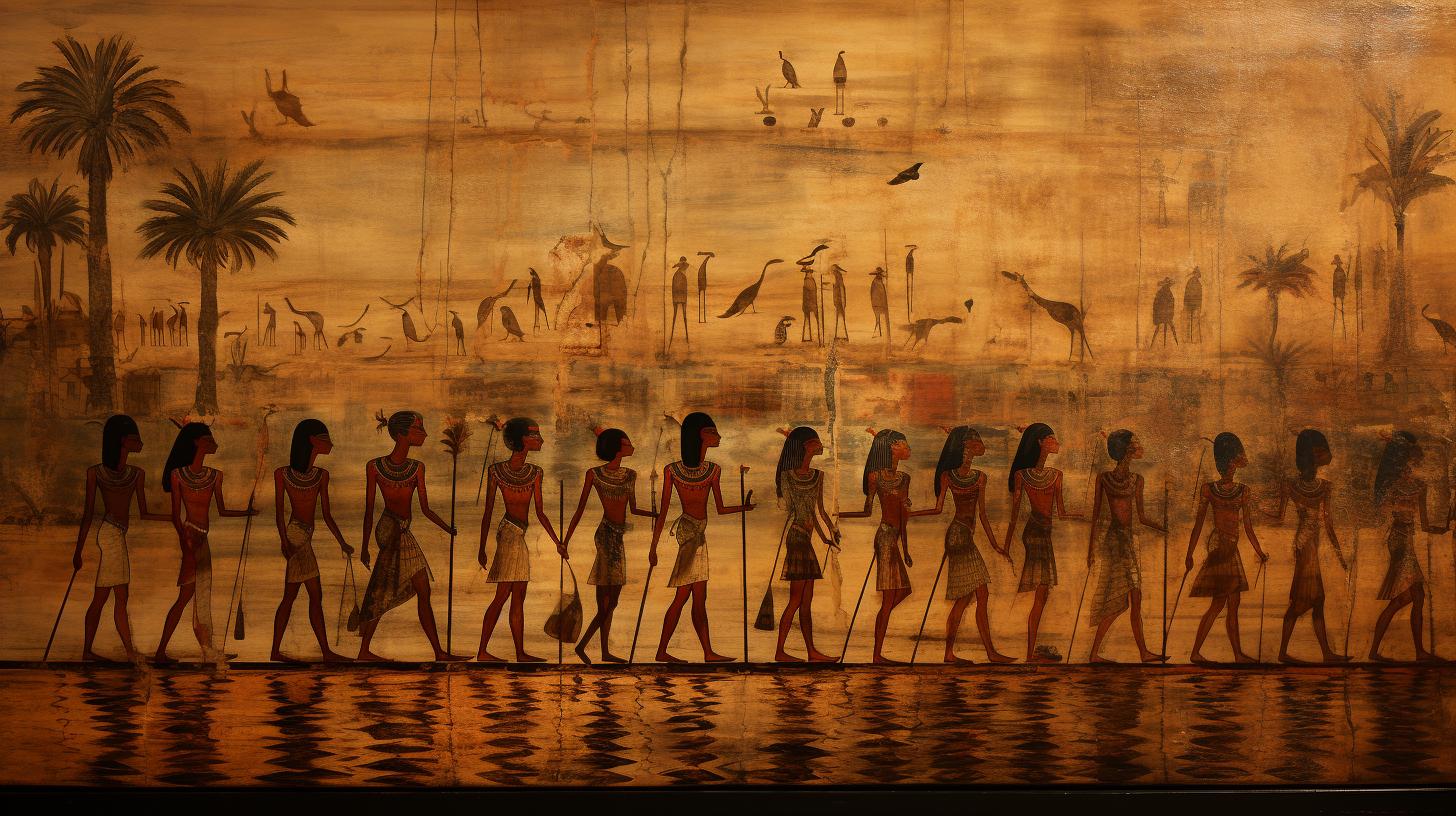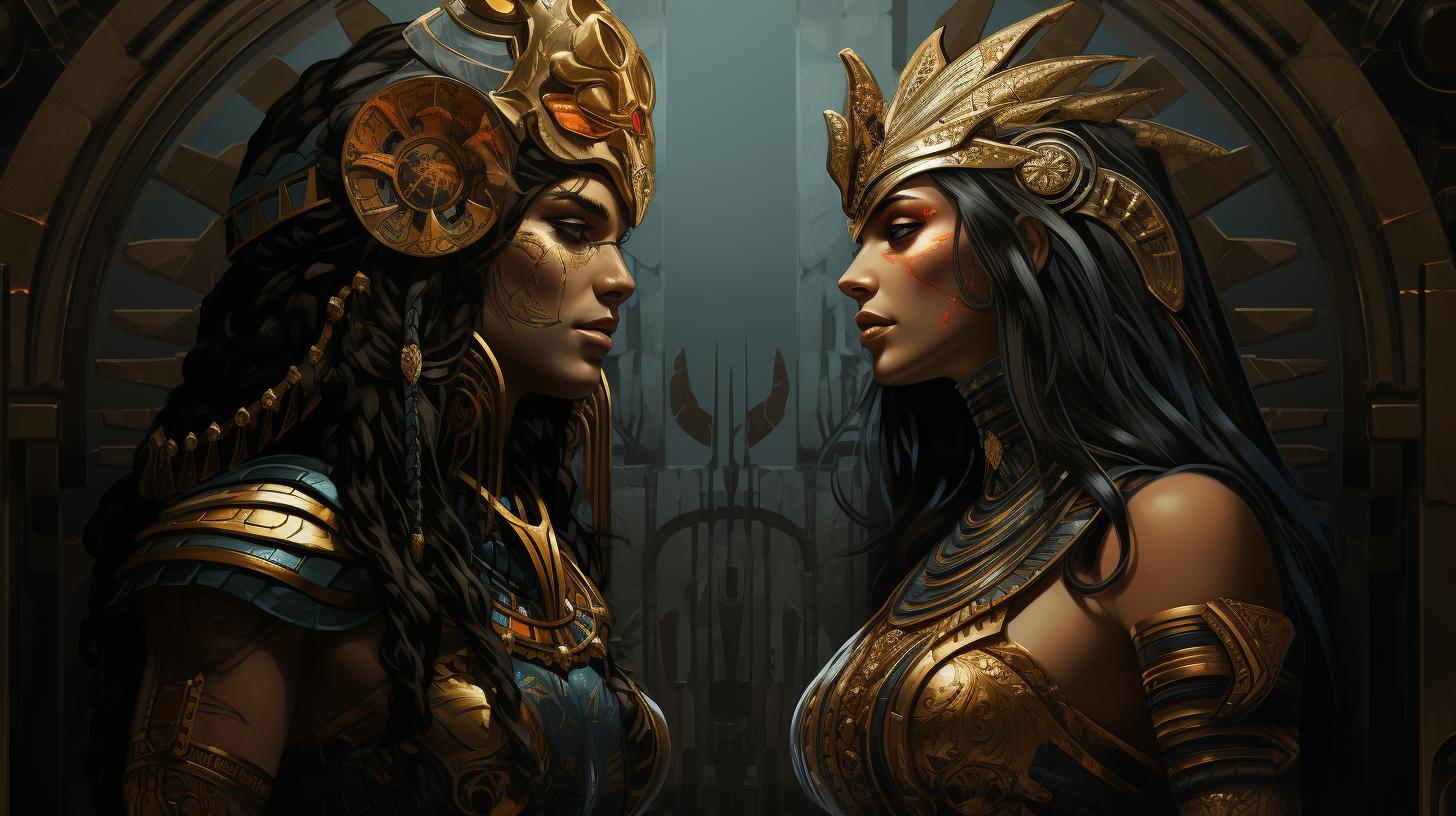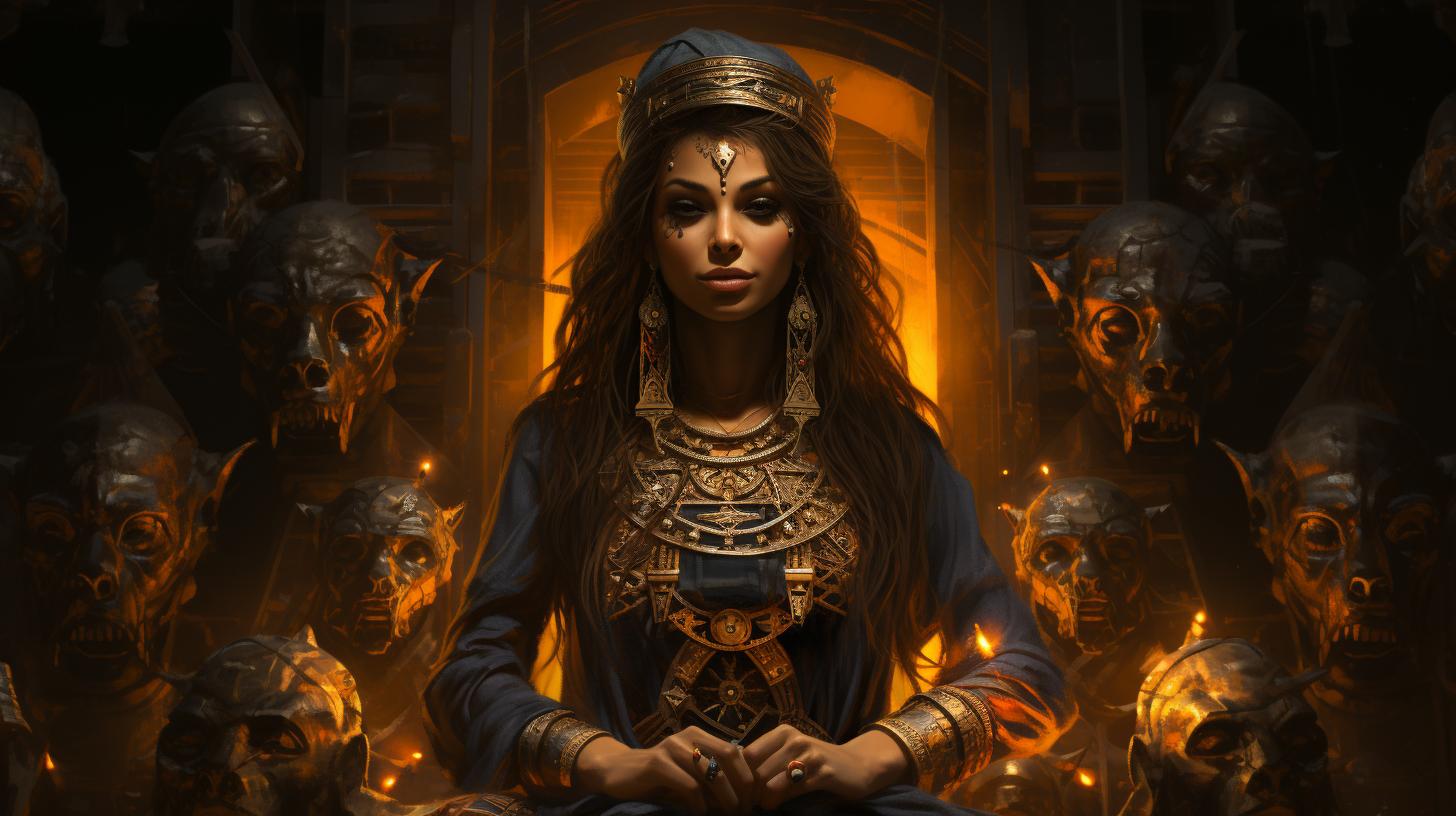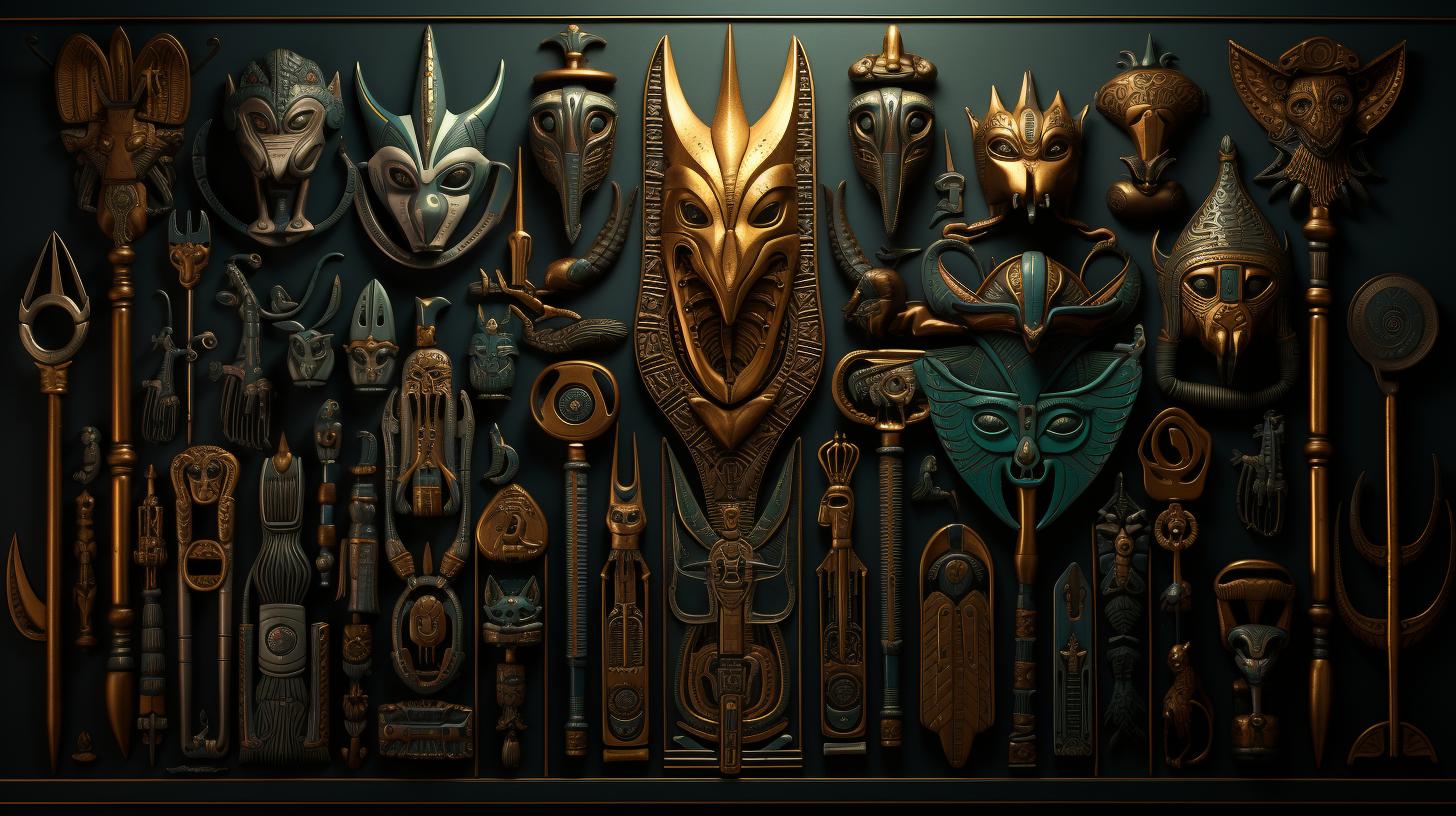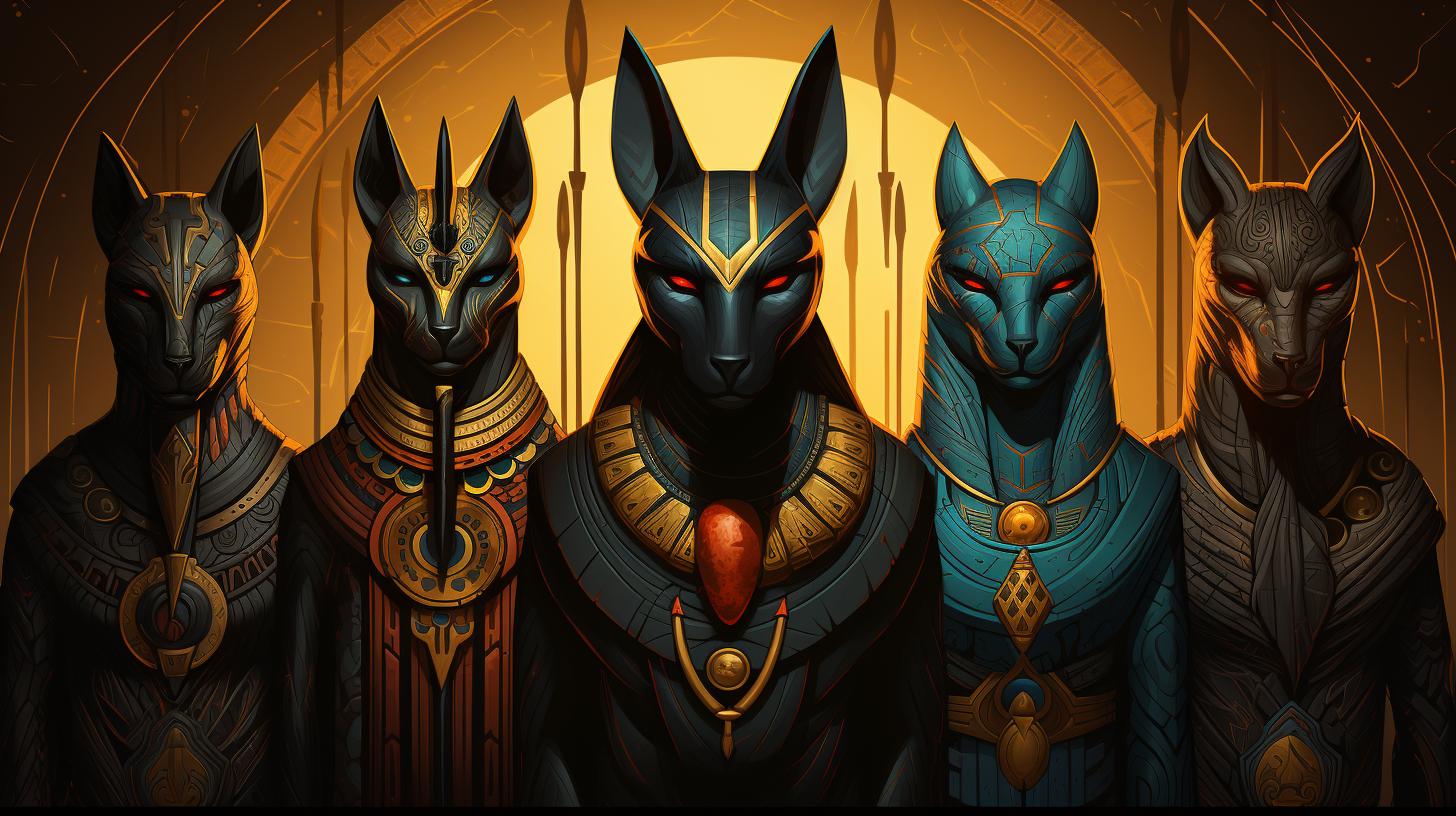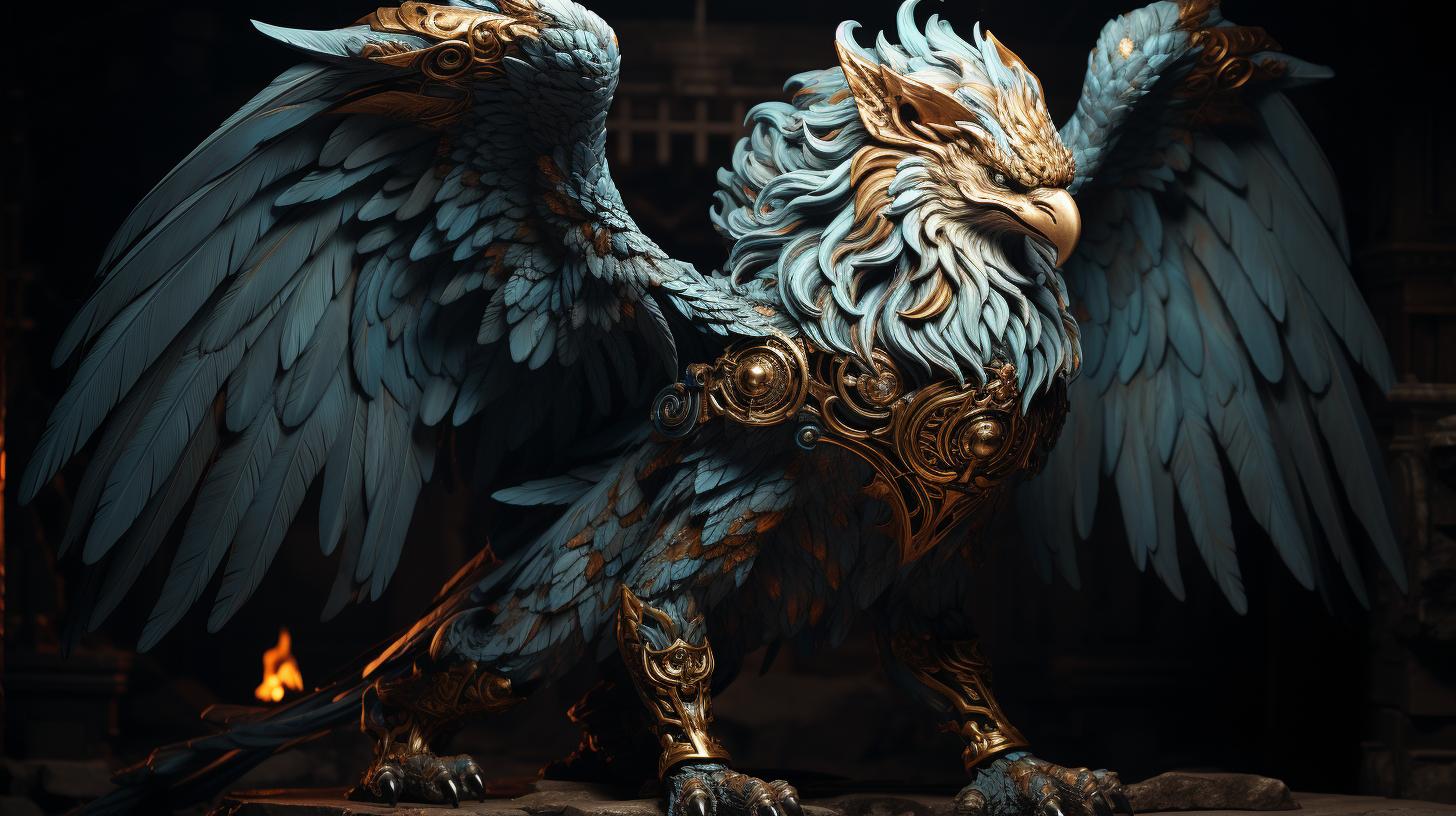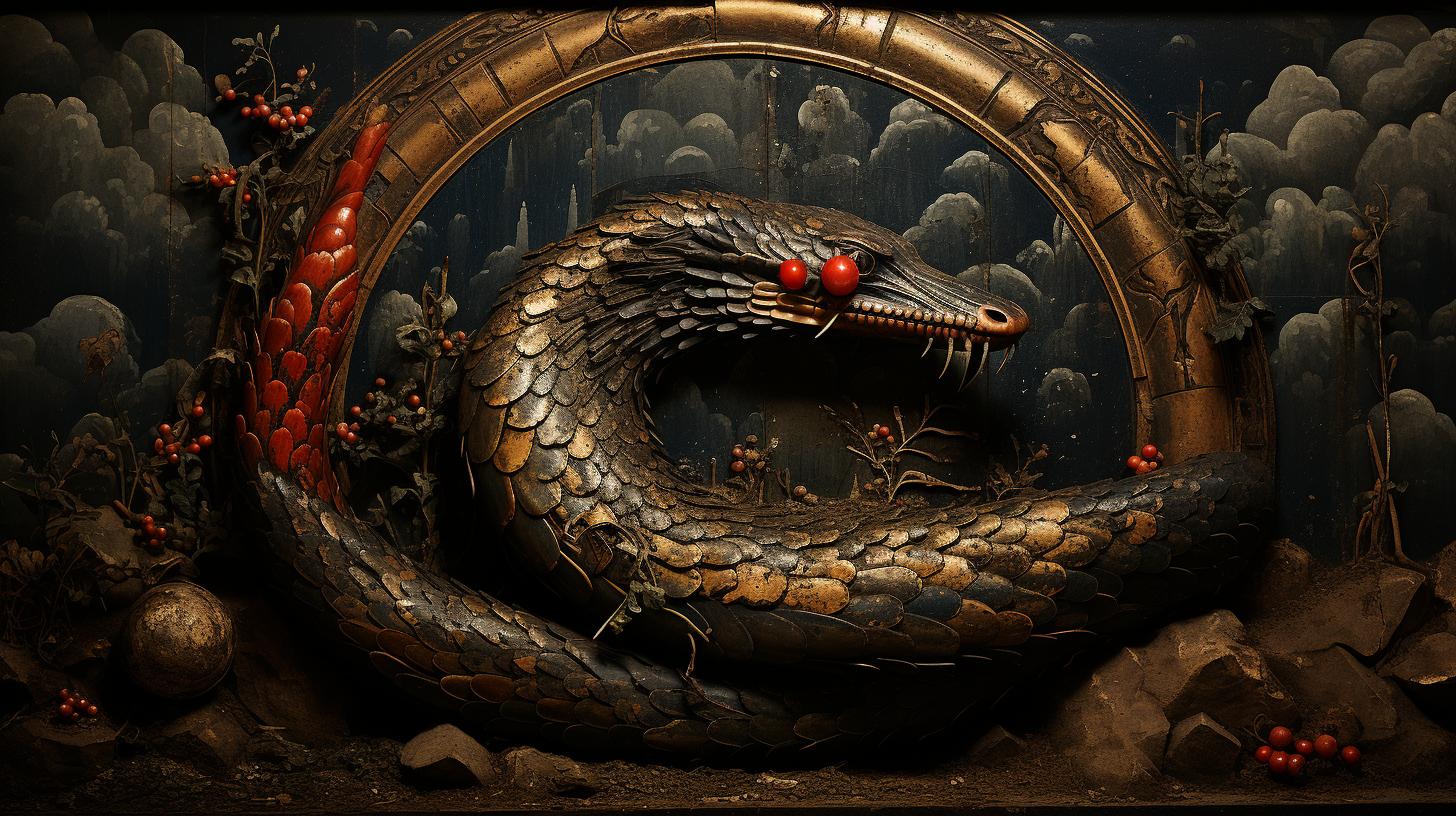Egyptian Mythology Sphinx: A Fascinating Exploration of Ancient Egyptian Legend
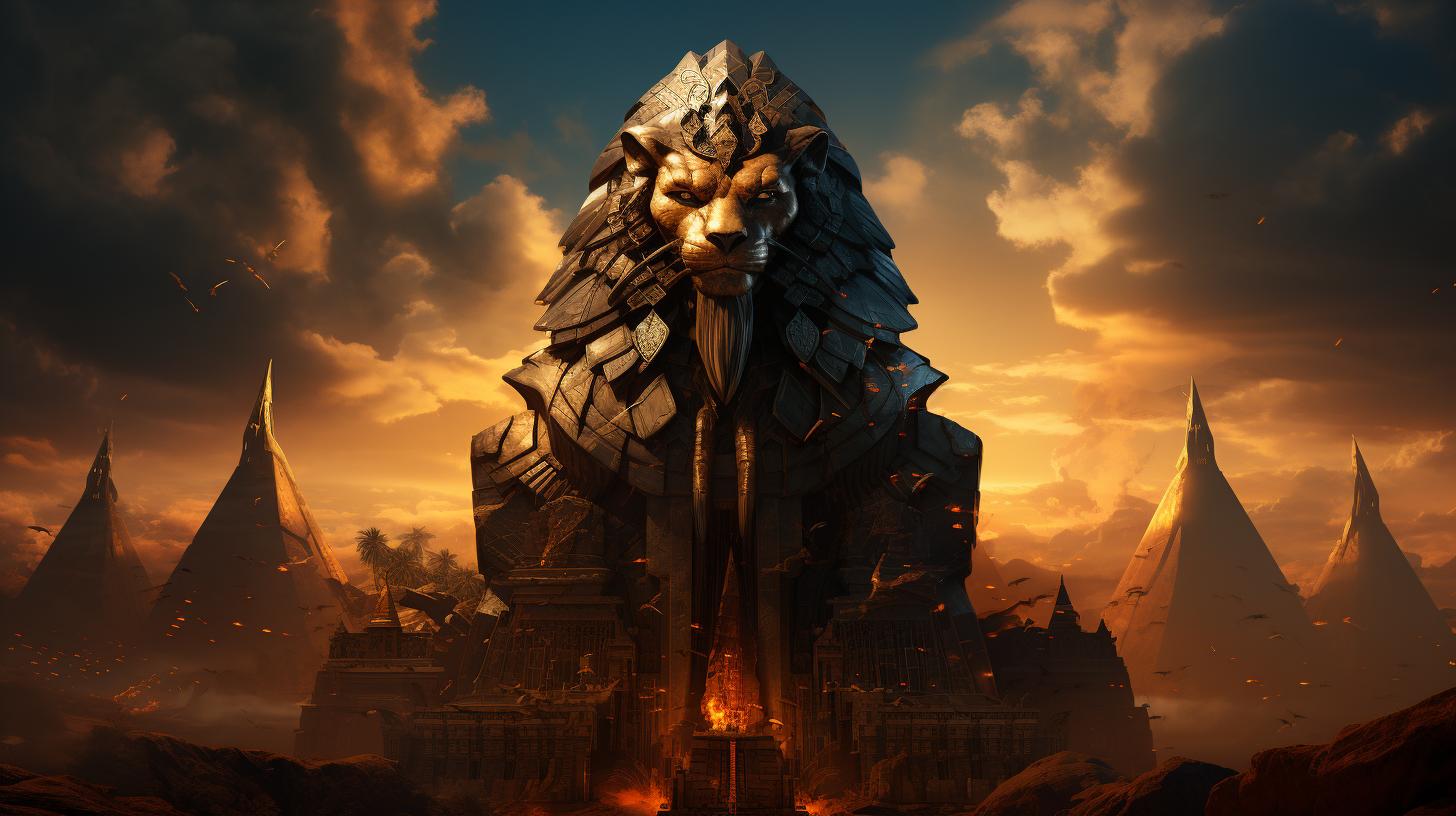
The Egyptian mythology Sphinx holds a significant place in ancient Egyptian culture. This enigmatic creature, with the body of a lion and the head of a human, has captured the imagination of people for centuries.
In this article, we will delve into the origins, symbolism, and physical characteristics of the Sphinx, as well as its relationship with the pyramids of Giza. We will also explore recent discoveries, controversies, and the Sphinx’s influence in popular culture and art.
Get ready to unravel the mysteries of the Egyptian mythology Sphinx.
Throughout history, the Sphinx has remained a symbol of power and mystery. Its presence has sparked debates and sparked the interest of scholars, archaeologists, and artists alike.
From exploring its ancient origins to deciphering its symbolic significance, the Egyptian mythology Sphinx continues to fascinate and intrigue us. Join us as we embark on a captivating journey into the world of the Sphinx.
The Great Sphinx
The Great Sphinx is a magnificent monument located on the Giza Plateau in Egypt. This ancient structure has captivated the world with its enigmatic aura and mythical significance. Let’s delve into its origin and history, as well as explore its significance in ancient Egyptian mythology.
The Origin and History of the Sphinx
The origin of the Sphinx is steeped in mystery. It is believed to have been built during the reign of Pharaoh Khafre, around 2500 BCE. However, the exact purpose and builders of this colossal statue remain debated among archaeologists and Egyptologists.
The Sphinx is thought to have been carved out of a limestone block, with the head possibly representing Pharaoh Khafre himself. Over the centuries, the monument has suffered wear and erosion, yet its allure and majestic presence have endured the test of time.
The Significance of the Sphinx in Ancient Egyptian Mythology
In ancient Egyptian mythology, the Sphinx held great significance. It was often associated with the sun god, Ra, and viewed as a guardian of sacred knowledge and ancient wisdom.
Many legends and stories have been passed down through generations, linking the Sphinx to riddles and riddles to the afterlife.
It was believed that the person who could answer the Sphinx’s riddle would gain access to hidden knowledge or even be granted eternal life.
The Sphinx’s enigmatic nature and connection to Egyptian mythology make it an intriguing subject of study and exploration.
In conclusion, the Great Sphinx is an awe-inspiring monument that continues to mystify and captivate us with its intriguing history and mythical significance. Its origin and purpose remain shrouded in mystery, adding to its allure.
The Sphinx’s role in ancient Egyptian mythology further enhances its importance and symbolism. As we continue to delve into its secrets, we uncover a deeper understanding of the ancient world and the profound beliefs of the Egyptians.
The Sphinx’s Physical Characteristics
The enigmatic face, mysterious body, and intricate enclosure of the Sphinx contribute to its mesmerizing allure and enduring fascination.
The Enigmatic Face of the Sphinx
The face of the Sphinx is a captivating feature that has inspired countless theories and interpretations. Carved with precision, the face displays an enigmatic expression, which some believe represents wisdom and serenity, while others suggest it portrays the sternness of a guardian.
Despite the ravages of time, traces of the original pigment used to paint the face have been discovered, hinting at the Sphinx’s vivid appearance in ancient times. The eyes, in particular, hold an intense gaze that seems to penetrate the very souls of those who stand before it.
The Mysterious Body of the Sphinx
Beneath the mighty head of the Sphinx lies a massive lion’s body, symbolizing strength, power, and protection. The body has weathered the ages, showcasing its remarkable endurance against erosion and the passage of time.
Its majestic posture commands respect, as if guarding the secrets and mysteries of ancient Egypt.
Various theories surround the original purpose of the Sphinx’s body, with some suggesting it represents the duality of human and animal characteristics, while others propose it serves as a celestial marker aligning with astronomical events.
The Sphinx Enclosure
The Sphinx is surrounded by an elaborate enclosure, known as the Sphinx Enclosure, which further adds to its enigmatic nature.
Stone walls and a paved causeway enclose the area around the Sphinx, creating a sense of sacredness and reverence.
The enclosure is adorned with statues, artifacts, and inscriptions that provide valuable insights into the Sphinx’s symbolism and its connection to ancient Egyptian rituals and beliefs.
Exploring the Sphinx Enclosure offers a glimpse into the ancient rituals and ceremonies that once took place in its vicinity, immersing visitors in the rich tapestry of Egyptian mythology.
The Sphinx at Giza
The Sphinx at Giza is an awe-inspiring monument that shares a profound relationship with the pyramids of Giza, one of the most iconic archaeological sites in the world. Situated on the west bank of the Nile River, this enigmatic creature stands guard in front of the pyramids, creating a mystifying atmosphere that has captivated explorers, archaeologists, and tourists alike.
The Relationship between the Sphinx and the Pyramids of Giza
The Sphinx and the pyramids of Giza are intricately connected, as if they were part of a grand plan. The Sphinx is situated in close proximity to the three main pyramids: the Great Pyramid of Khufu, the Pyramid of Khafre, and the Pyramid of Menkaure.
This proximity suggests that the Sphinx played a significant role in the religious and funerary beliefs of the ancient Egyptians.
The Sphinx seems to be strategically placed, facing east towards the rising sun.
Its presence adds an enigmatic touch to the already mysterious pyramids, enhancing their allure and symbolism. The exact purpose of this positioning remains a subject of speculation and intrigue.
The Pharaoh Khafre and the Sphinx
One of the most prominent theories regarding the Sphinx’s connection to the pyramids revolves around Pharaoh Khafre, the builder of the second pyramid.
Many believe that Khafre commissioned the construction of the Sphinx to serve as his guardian and protector, a symbol of his divine authority.
The Sphinx’s face, with its remarkable resemblance to Pharaoh Khafre, further strengthens this theory.
The face is believed to depict the king, perpetuating his remembered image for eternity. This association between the Sphinx and Khafre adds a personal dimension to the enigma surrounding its creation.
The Sphinx Temple
Adjacent to the Sphinx lies the Sphinx Temple, a structure that offers valuable insights into the religious practices associated with the Sphinx. This temple is believed to have served as a center for rituals and ceremonies dedicated to the rebirth and eternal life of the pharaoh.
The Sphinx Temple’s architectural design aligns with the Sphinx’s position, emphasizing the close connection between the two. Its presence serves as a testament to the spiritual significance attributed to the Sphinx and its surrounding complex.
The Sphinx’s Symbolism and Mythological Significance
The Sphinx, with its enigmatic presence, held deep symbolism and played a significant role in ancient Egyptian beliefs and rituals. It was regarded as a powerful guardian and protector, revered for its connection to the divine.
The Sphinx as a Guardian and Protector
One of the key aspects of the Sphinx’s symbolism was its role as a guardian. Positioned prominently at the entrances of temples and tombs, it was believed to ward off evil spirits and protect the sacred spaces from intruders.
The Sphinx’s imposing stature and watchful gaze instilled a sense of awe and reverence, serving as a deterrent to potential threats.
Furthermore, the Sphinx was associated with the god Horus, the falcon-headed deity who symbolized protection and kingship.
This connection reinforced the Sphinx’s role as a guardian and protector of the pharaoh and the divine order of the Egyptian kingdom.
The Sphinx and its Association with the Sun God
Another fascinating aspect of the Sphinx’s symbolism lies in its association with the sun god, Ra.
The Sphinx’s face, often depicted wearing the Nemes headdress, resembled that of the pharaoh, representing their divine connection. Just as Ra traversed the sky, bringing light and life to the world, the Sphinx embodied the solar deity’s power.
It was believed that the Sphinx witnessed the rising and setting of the sun, symbolizing the eternal cycle of life and death. This association with Ra further elevated the Sphinx’s status as a celestial being, bridging the gap between the mortal and divine realms.
The Sphinx’s Role in Ancient Egyptian Beliefs and Rituals
Apart from its protective and solar associations, the Sphinx held a significant role in various religious and funerary rituals of ancient Egypt. For instance, during the coronation of a new pharaoh, they would perform ceremonies near the Sphinx, seeking blessings and divine guidance for their reign.
Additionally, the Sphinx played a vital role in the belief of the afterlife. It was believed that the deceased pharaohs would journey through the Sphinx, transitioning from the earthly realm to the realm of the gods.
The Sphinx represented a threshold that the pharaohs had to pass through to achieve eternal life.
In conclusion, the Sphinx’s symbolism and mythological significance in ancient Egyptian culture were deeply intertwined with its role as a guardian and protector, its association with the sun god Ra, and its involvement in various religious and funerary rituals.
It continues to captivate us with its mysteries and serves as a timeless symbol of Egypt’s rich mythological heritage.
Recent Discoveries and Controversies
Recent years have brought forth intriguing insights and heated debates surrounding the Egyptian mythology Sphinx. Advances in technology and research have led to modern reinterpretations of the Sphinx’s origins, challenging long-held beliefs.
Let’s explore some of the significant discoveries and controversies that have stirred the archaeological community.
Modern Reinterpretations of the Sphinx’s Origins
Archaeologists and historians have put forth alternative theories about the origins of the Sphinx. Some propose that it predates the Pharaoh Khafre, suggesting a much older construction. They speculate that the Sphinx may even predate the pyramids themselves, pushing its origins further back into prehistoric times.
These theories are based on extensive geological studies and analysis of the erosion patterns on the Sphinx’s body, which indicate possible exposure to water rather than just wind erosion.
The Controversy Surrounding the Sphinx’s Missing Nose
One of the most enduring mysteries surrounding the Sphinx is the absence of its nose.
Some argue that it was a deliberate act of vandalism, possibly carried out during an early Islamic period, while others believe natural weathering caused its loss. Numerous theories and speculations have arisen, and the debate continues to intrigue historians and scholars.
However, no conclusive evidence has been found to definitively solve the riddle of the missing nose.
The Dream Stele and its Importance in Understanding the Sphinx
The Dream Stele, also known as the Sphinx Stele, is a fascinating artifact that holds considerable significance in deciphering the meaning and purpose of the Sphinx. The stele, erected during the reign of Pharaoh Thutmose IV, describes a dream in which the Sphinx promises kingship to Thutmose IV if he clears the sand from its body.
This inscription offers valuable historical and mythological insights into the Sphinx’s purpose and the beliefs of ancient Egyptians.
In conclusion, recent discoveries and controversies surrounding the Egyptian mythology Sphinx have shed new light on its origins, the mystery of its missing nose, and the significance of the Dream Stele.
These ongoing debates and investigations continue to fuel intrigue and deepen our understanding of this ancient enigma.
The Sphinx in Popular Culture and Art
The Sphinx, with its enigmatic presence and rich symbolism, has captured the imagination of artists and writers throughout history. Its imposing figure and mysterious aura have made it a prominent subject in literature, film, and various art forms.
Let’s explore the influence of the Sphinx in these creative realms.
The Influence of the Sphinx in Literature and Film
The Sphinx’s allure has inspired numerous literary works, where its enigma and connection to ancient Egypt are often explored. From classic novels to contemporary fantasy, authors have woven tales that revolve around the Sphinx.
It serves as a symbol of mystery, riddles, and hidden knowledge.
- Examples include Agatha Christie’s “Death on the Nile,” where the Sphinx becomes an integral part of the intricate detective plot.
- In the realm of fantasy, the Sphinx appears in Rick Riordan’s “The Kane Chronicles,” where it guards important secrets of Egyptian mythology.
- Furthermore, the Sphinx’s appearance in films such as “The Mummy” franchise has popularized its image and introduced it to a wider audience.
Artistic Depictions of the Sphinx throughout History
Artists have long been captivated by the Sphinx’s enigmatic nature, resulting in numerous artistic interpretations that span centuries. Whether it’s through sculptures, paintings, or other forms of visual art, the Sphinx’s presence is evident in various artistic expressions.
- One of the most iconic artistic representations is the limestone statue known as the Great Sphinx of Giza, created during the Old Kingdom of ancient Egypt. Its serene yet powerful countenance has inspired awe and fascination.
- Throughout history, artists have depicted the Sphinx in different mediums, capturing its imposing presence and mystical allure.
From intricate engravings to detailed paintings, the Sphinx’s image serves as a symbol of Egyptian civilization and its enigmatic past.
- Contemporary artists continue to be influenced by the Sphinx’s symbolism, incorporating its timeless appeal into their creations.
As we explore the influence of the Sphinx in popular culture and art, we begin to understand the profound impact this mythological creature has had on our collective imagination.
From literature to film and visual arts, the Sphinx’s enigma continues to inspire and captivate us.
.











